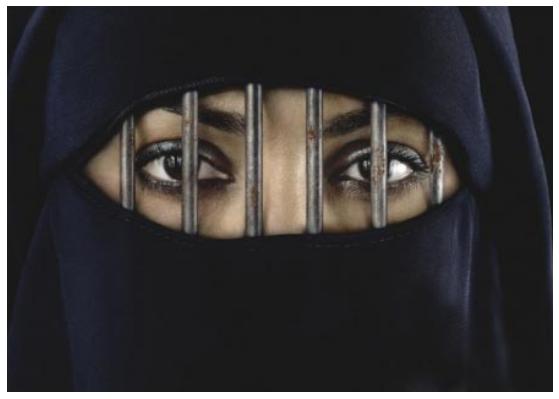35+ Famous Artists From Brazil
The Expressionist movement was a trend that presented a strong Avant-guard direction to the Arts, reverencing the subjectivity and the emotional value of the themes. Expressionism originated at the end of the 19th century and the beginning of the 20th century, arriving in Brazil in the early 1900s. The Naturalist authors, influenced by all these significant events, tried to portray the reality with less flourishing and more authenticity.
Tarsila do Amaral, an iconic figure in Latin American modernism, crafted a distinct vocabulary within Brazilian art, one that remains unmistakably influential to this day. “Mulher na Janela” (“Woman at the Window”) depicts a woman looking out of a window, suggesting a moment of contemplation or observation. Through this artwork, he offers a glimpse into the everyday life of Brazilian women, contributing to the narrative of Brazilian art and culture. Later on, she became a pioneer in producing installations in which viewers can interact with the artworks.
Landscape no. 9 ( , by Lucia Laguna
.jpg)
Both artists would also colaborate in the making of the Igreja da Ordem Terceira de São Francisco de Assis, in Ouro Preto. Mestre Ataíde painted six panels that mimicked tile mosaics and also decorated the main chappel’s walls. When the land that would soon be known as Brazil was invaded and colonized by the Portuguese in 1500, there approximately five million native indigenous people living in the country. Unfortunately, a great portion of the first inhabitants of Brazil was killed during the Portuguese invasion, and much of their culture was either lost or diluted throughout the ages. In the beginning of the 21st century, the ancient Indian traditions of body painting, pottery, cult statuettes, and feather art are still being cultivated by the remaining Indian peoples. Statuettes and cult objects, such as the small carved-stone amulets called muiraquitãs, also belong to these cultures.3 The Mina and Periperi cultures, from Maranhão and Bahia, produced interesting though simpler pottery and statuettes.
famous sculptors from Brazil and the…
The indigenous people the colonizers encountered did not practice painting as it was known in Europe, using paint for bodily decoration and the decoration of ceramic artifacts. There also exist diverse painted panels of hunting scenes and other figures created by pre-historic peoples in caves and on rock walls in certain archeological sites. Victor Meirelles, Pedro Américo, W. Reichardt, and Almeida Junior were the leaders of such academic art, but this period also received important contributions from foreigners like Georg Grimm, Augusto Müller, and Nicola Antonio Facchinetti. Professionally, he and his brother Otavia go by the name Osgemeos, which is Portuguese for “twins.” The duo started out as humble graffiti artists, decorating the street corners of their native São Paulo, Brazil. Now, they’re internationally renowned, filling museums and gallery spaces across the globe.
João VI created several administrative bodies in Brazil, such as the School of Medicine, a banking institution called Banco do Brasil (which still exists today), as well as the Royal Library, the Royal Press, and the Royal Theater of São João. At the beginning of the 19th century, when french general Napoleon Bonaparte’s armies invaded Portugal, the king of Portugal, D. João VI, saw himself forced to flee with his family and court to Brazil. The arrival of the Portuguese royal family would be another major landmark that changed the history of art in the country. The peak of integration between architecture, sculpture, carving, and painting was manifested in Minas Gerais through the works of names such as Mestre Ataíde, and Aleijadinho. In addition, there are still massive churches in Bahia whose construction was influenced by Baroque art, like the São Francisco Church and Monastery (Igreja e Convento de São Francisco).
.jpeg)
Aleijadinho, whose real name was Antônio Francisco Lisboa, was a highly influential sculptor and architect during the Brazilian colonial period. Before becoming huge during the Modern Art Week in 1922, Di Cavalcanti worked with several Brazilian writers such as Manuel Bandeira, Vinicius de Moraes, and Jorge Amado, creating covers for some of their work. He was also responsible for the Modern Art Week’s catalog cover, as well as showcasing 11 of his paintings during the event. This last era was inspired by Tarsila’s trip to the Soviet Union in 1931, which led the artist to tackle more substantial issues when she returned to Brazil. They defended freedom of speech and the adoption of “the most modern forms of expression from outside the country”.
Beyond his artistic contributions, Portinari served as a cultural ambassador, promoting Brazil’s cultural identity worldwide. Today, his artworks remain celebrated for their profound portrayal of Brazilian society and life. The rich history of Brazil’s visual arts is echoed by the country’s museums, which hold notable collections of Brazilian and international art.
Hélio Oiticica’s “Tropicália”, a colorful immersive installation piece, incorporated references to the slums of Rio de Janeiro. The title relates to the cultural movement of the same name, that called back to the Antropophagic Manifesto of the 1920s to offer a more tongue-in-cheek perspective on the myths of an exotic and “wild” Brazil. The cultural effervescence of the 1950s began to question post-war society, rebelling against the pervasive lifestyle in cinema, fashion, television and literature. Contemporary Brazilian artists followed this ideal that questioned values and standards. Meirelles was one of the artists responsible for the consolidation of historical painting in Brazil with his famous “Primeira missa no Brasil” The First Mass in Brazil (1861). Of this genre, the MASP collection includes the paintings “D. Pedro II” (1864) and “Dona Tereza Cristina” (1864).
In this painting, we can see people enjoying ‘Frevo’, a traditional dance style from the state of Pernambuco. Saint Clair Cernim is a Brazilian sculptor who began his career experimenting with Surrealist art. But Saint Clair would only gain notoriety when he started using different types of material (such as bronze, ceramics, marble, and stainless steel) in his sculptures, which prompted him to national and international fame.
My mother is a pedagogue and her teaching methodology is through poetry; she always writes a poem to introduce a new subject to her students. This moment reminded me of the verses of a specific poem, and those words helped me understand that I needed to ask my mother to pay attention to my friend’s family. My father always reminds me of the rebellion, the stubbornness, the consciousness and consistency of the gestures of those who preceded me. In some non-Western cultures, travesti is not about gender, but about another social Brazilian art organization that perhaps does not even cut through the realms of identity.
Mestre Ataíde is another big name when it comes to Brazilian Baroque (or Barroco Mineiro more particularly) at the beginning of the 19th century. His art comprehends the carving and gilding of religious images, as well as paintings on panels and church ceilings. Each of the prophets was sculpted in natural size, in a different position, using coordinated gestures. In this sense, Aleijadinho managed to do something extraordinary, as the sculptures suggest to the observer that the stone figures are moving. The elaboration of these sculptures took about five years, as the artist wanted his work to render gestures that had expressive balance and harmony. Aleijadinho is considered the most important Brazilian plastic artist of the Baroque from Minas Gerais.
“Operários” stands as a significant example of Brazilian art, showcasing Tarsila’s commitment to depicting the essence of Brazilian life. “Guerra e Paz” (“War and Peace”) is a monumental painting by Candido Portinari, completed in 1956. The “Guerra” (“War”) panel portrays the horrors of conflict, while the “Paz” (“Peace”) panel celebrates unity and harmony.











